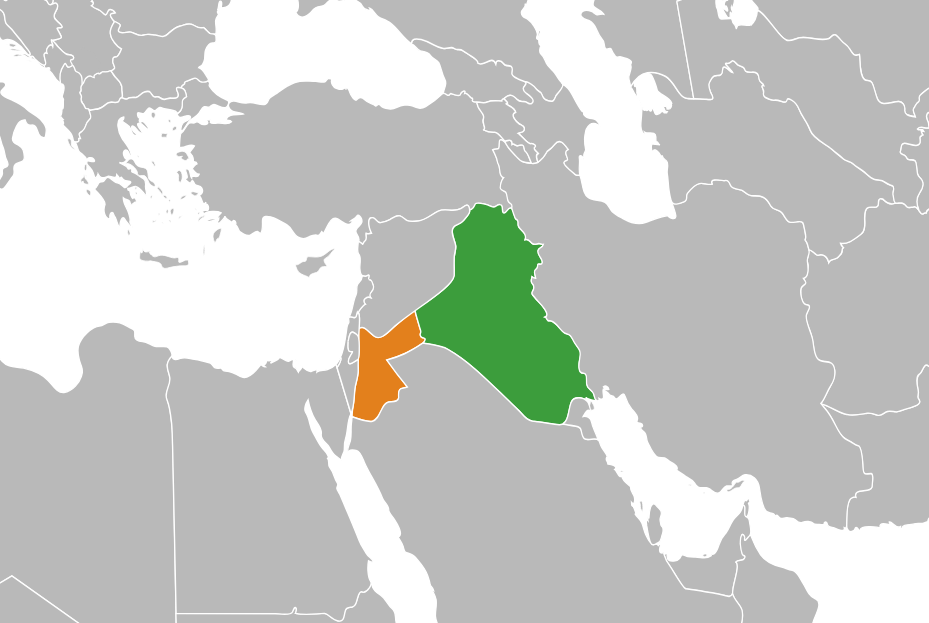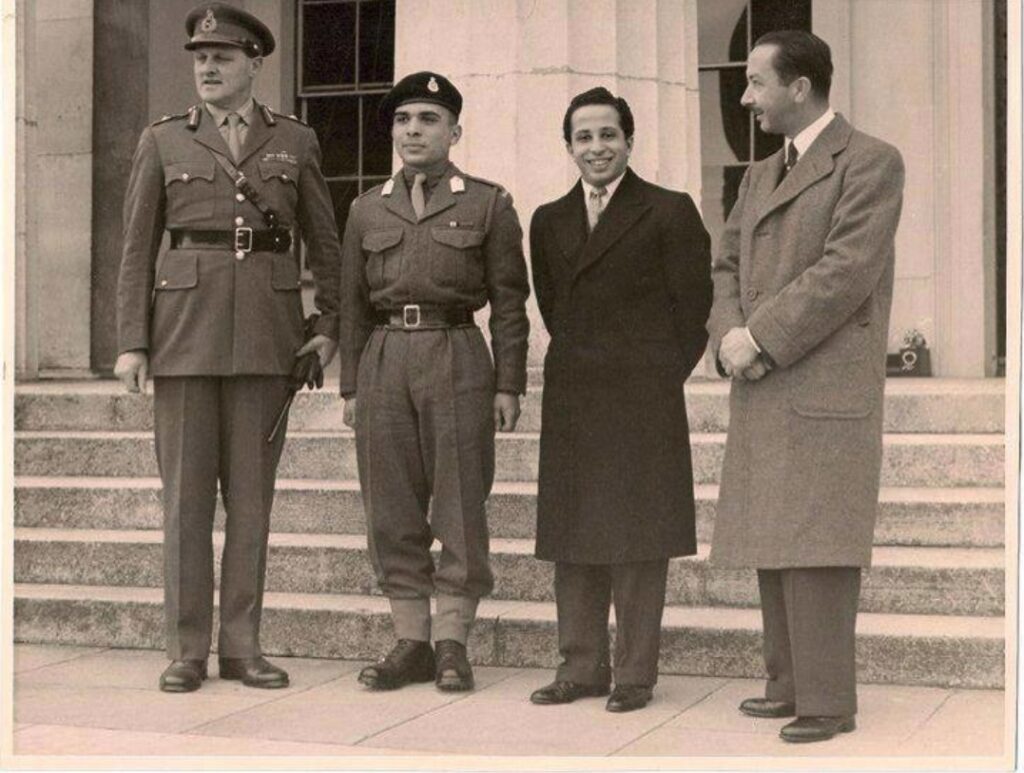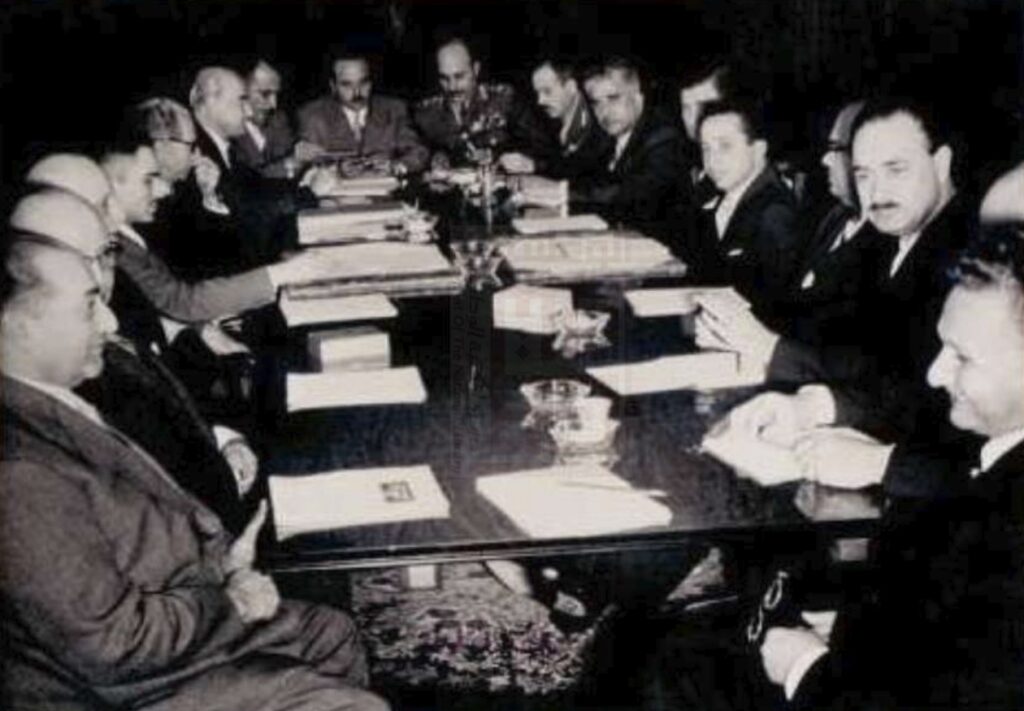When Jordan and Iraq United: The Arab Federation

By Liam Nagle / Arab America Contributing Writer
When one thinks of Pan-Arabism and Arab unification, they might think of the United Arab Republic – the unification of Syria and Egypt, which existed between 1958 and 1961. However, there is a lesser-known unification of two Arab states that occurred in 1958 as well: the Hashemite Arab Federation. Iraq and Jordan, as a counterweight to the United Arab Republic and the rising trend of Pan-Arabism in the Arab world, united briefly into a single country ruled by two monarchs – King Faisal II of Iraq and King Hussein of Jordan. But this union came to a bloody end when a military coup overthrew and killed Faisal in Iraq. Why did this union form, and how did we get here?
The Hashemite Monarchies

The primary reason the two countries were able to unify relatively easily was due to their rulers’ shared heritage – both Faisal II and Hussein were from the same dynasty. The dynasty traces its roots back to the Prophet Muhammad’s grandfather, who started the dynasty and has remained ever since. In World War One, in exchange for their support in fighting against the Ottomans, Faisal II and Hussein’s fathers were given monarchical leadership over Iraq and Jordan, albeit under British dominion.
Even after both countries became independent, the British still influenced the two countries, particularly Iraq. For example, Britain maintained control over Iraqi foreign affairs, military supplies, and training. Because of this, their governments typically took pro-British positions, such as Iraq supporting the British, French, and Israeli forces during the Suez Crisis. Such moves made them very unpopular with their Arab citizens, who were increasingly embracing Pan-Arabist beliefs.
The Formation of the Federation

The rise of Pan-Arabism was seen as a threat to British dominion in the Middle East due to its anti-imperialist beliefs, as well as erroneous claims that it was a pro-communist movement. As such, Britain, the United States, and their allies in the Arab world sought to either resist or co-opt the movement. This resulted in, among other things, the unpopular Baghdad Pact to resist Soviet expansion southwards as part of the United States’ containment policy. This agreement was also seen by many Arabs, such as Gamal Abdel Nasser in Egypt, as an attempt to subvert Pan-Arabism. Nasser specifically called the agreement a capitulation to imperialist traitors. Iraq, Jordan, and the various other monarchies of the region were now firmly positioned in opposition to Egypt, Syria, and other pan-Arab governments.
When Egypt and Syria unified into the United Arab Republic in early 1958, this set off alarms for the Jordanian and Iraqi administrations. The Arab populations of both countries were deeply supportive of Pan-Arabism, and Iraq’s citizens were becoming deeply anti-government as well. To appease their people, Jordan and Iraq began discussing the potential unification of their two countries. They already held similar positions, had similar governments, and both Faisal II and Hussein were close relatives – it wouldn’t be incredibly hard to unify the two countries. As such, on February 14th, 1958, Iraq and Jordan unified; their foreign policies would be united, but both countries would maintain their domestic politics. Faisal II and Hussein would rule their respective countries in a constitutional diarchy (meaning two monarchs), while the former Iraqi prime minister, Nuri al-Said, would become premier of the new union.
14 July Revolution and the Dissolution of the Federation

The Arab Federation, however, would be short-lived. Many of the Arabs saw the unification as mere posturing – a cheap attempt to win over popularity by co-opting Pan-Arab beliefs. Tensions between the United Arab Republic and the Arab Federation approached open hostility, with both countries beginning to mobilize troops on the border. Meanwhile, a group of Iraqi military officers formed their own Free Officers Movement, inspired by Egypt’s Free Officers Movement back in the late 1940s and early 1950s. Under the guise of sending troops to the border, military units loyal to the Free Officers entered Baghdad and initiated their coup d’etat. They located Faisal II, his family, and his ministers before executing most of them and mutilating their bodies. The Jordanian Prime Minister was also killed during the uprising. The new military government, led predominantly by Abd al-Karim Qasim, established a new Iraqi Republic and the Arab Federation was dissolved.
In the end, Jordan and King Hussein would not suffer the same fate as Faisal. The United States and Britain remained committed to supporting Jordan and Hussein and securing the country as a Western ally. Ironically, the United Arab Republic wouldn’t last much longer either – internal disagreements between the Syrians and Egyptians resulted in Syria’s peaceful secession from the union, and no other countries have since unified in the name of Pan-Arabism. Nevertheless, the Arab Federation gives us an intriguing story about the complexities at play in the post-colonial Arab world.
Want more articles like this? Sign up for our e-newsletter!
Check out our blog here!








